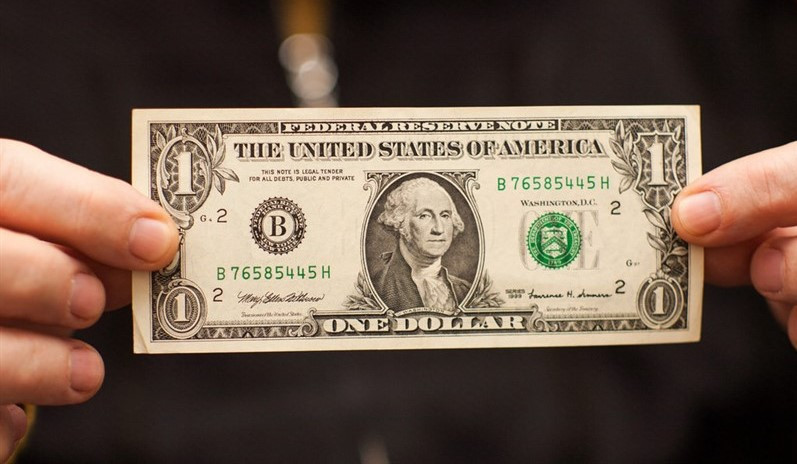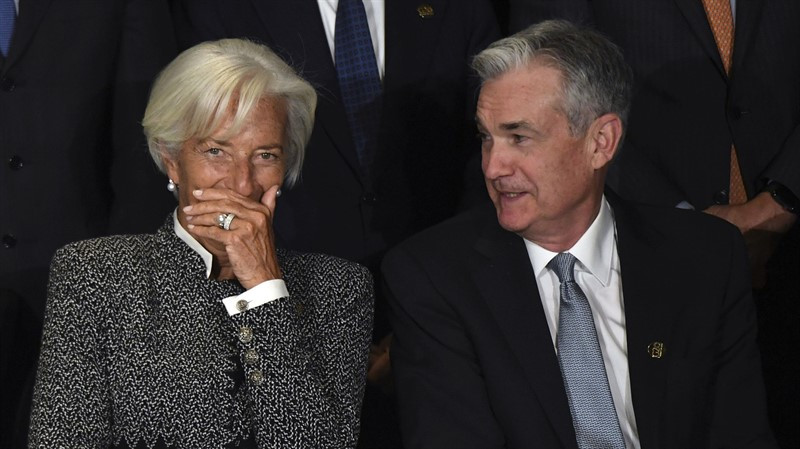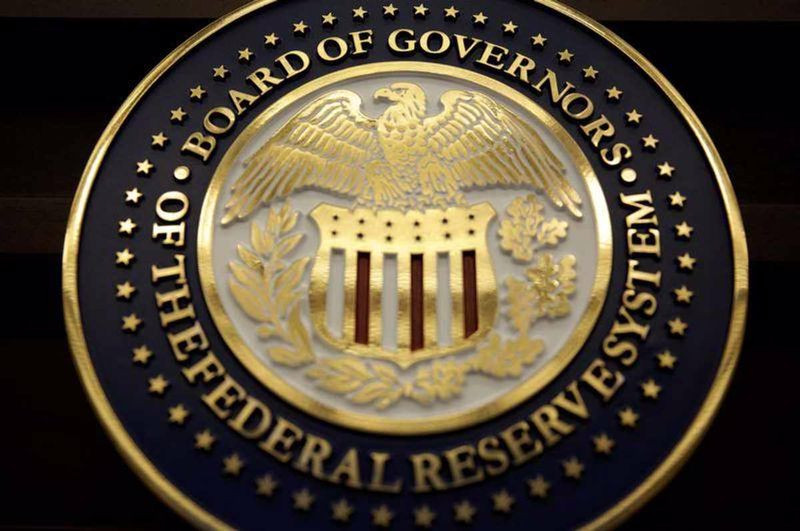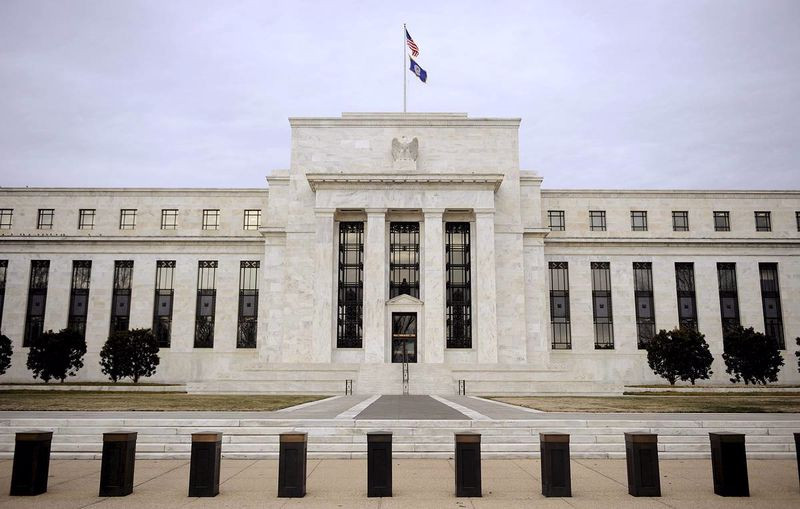
Geopolitical risks still dominate global markets and do not allow them to breathe freely. Russia's ongoing military special operation in Ukraine and Western sanctions against Moscow are shaking the global economy. Therefore, no matter how hard market participants try to stay at the achieved levels, in the end all their efforts go down the drain.
After a positive start to yesterday's session, the key Wall Street indexes could not keep the set bar. The S&P 500 declined by more than 0.7% to 4,173.11 points.
Investors followed the progress of negotiations between the Russian and Ukrainian delegations. After several hours of discussions, their participants decided to take a technical break until Tuesday.
Yesterday began with some optimism that the peace talks would show some progress. However, the real situation did not confirm this optimism.
Taking advantage of the weakening of risk sentiment, the protective greenback was able to shrug off intraday losses and ended trading at almost the same level from which it started - just above 99.00 points.
Meanwhile, the EUR/USD pair has lost most of the points scored against the backdrop of renewed hopes for a diplomatic solution to the conflict in Eastern Europe. Having reached a local high in the area of 1.0990, it rolled back to the area of 1.0940.
Speculators in the futures market have accumulated the largest net long position on the single currency since the middle of last year. However, the uncertainty around Ukraine and the expected increase in the Federal Reserve's interest rates are forcing the euro to defend against the US dollar.
Late on Monday evening, adviser to the head of the office of the President of Ukraine Alexey Arestovych said that a peace agreement with Russia could be reached within one to two weeks at the earliest, in May at the latest. This statement helped the euro find some demand.
The EUR/USD pair again tests the barrier at 1.1000 on Tuesday, while the US dollar is losing ground amid a cautiously optimistic market mood.
February data on retail sales, industrial production and investments in fixed assets in China brought a certain positive, which exceeded analysts' forecasts. These data indicate that the second most important export market for European businesses is still afloat.
At the same time, the deteriorating epidemiological situation in China is of concern, since the number of coronavirus cases in the country has reached a new record peak recorded since the beginning of the COVID-19 pandemic.

Moreover, Europe itself is struggling with the resurgence of the virus - the BA strain.2, also known as "stealth Omicron". German Health Minister Karl Lauterbach has warned that this week the number of new infections in Europe's largest economy is likely to reach another record high.
Meanwhile, the fighting in eastern Europe continues, and the west does not tire of imposing sanctions against Russia.
On Tuesday, the European Union approved the fourth package of restrictions against Moscow, which include a ban on new investments in the energy sector of Russia. Peaceful atom and transportation of energy resources to the EU will fall under the exceptions.
"These sanctions will make a tangible contribution to increasing economic pressure on the Kremlin in the future. The restrictions were agreed with foreign partners, including the United States," representatives of the European Commission said.
The EUR/USD pair is struggling to extend growth while the markets digest the latest news from the geopolitical front in anticipation of the next Fed meeting.
If investors continue to put a possible peace agreement between Russia and Ukraine in the quotes, the EUR/USD pair should maintain the momentum of recovery. On the other hand, it will be difficult for the pair to maintain positions if geopolitical tensions escalate again.
"Geopolitics will continue to be the main driver for the main currency pair. Outright negativity seems to have stopped, and the focus has shifted towards negotiations. EUR/USD has probably formed a short-term base at the level of 1.0800," OCBC Bank specialists noted.
"The pair may fluctuate in a wide range from 1.0800 to 1.1100 in anticipation of fresh geopolitical news," they believe.
Hopes that negotiations between Russian and Ukrainian negotiators can lead to a peaceful solution, after all, support the euro. However, the single currency is expected to remain under pressure. If a rise in interest rates in the United States is inevitable, then in the eurozone the situation in this regard still looks uncertain, economists at Commerzbank say.
"The end of the Russian-Ukrainian conflict would be positive for the euro. However, doubts about how much the euro will be able to grow eventually are justified. This week, the US central bank is likely to start a cycle of rate hikes, thereby once again making it clear that there is still quite a big difference between the monetary policy of the Fed and the ECB," they said.
"The US central bank is already ready to fight inflation, while its European counterpart is still hesitating, which clearly does not indicate a strengthening of the euro against the US dollar at the moment," Commerzbank said.

As markets adapt to the slower pace of interest rate hikes abroad, the greenback should strengthen against most G10 currencies, Wells Fargo strategists say.
"In the first quarter of 2022, the US currency will move in a sideways range, although volatility will remain elevated as fresh news related to the situation in Ukraine arrives. In the longer term, we maintain our forecast for a prolonged period of strengthening of the dollar, as we expect the Fed to raise interest rates at a faster pace compared to other central banks," they said.
On Tuesday, the USD index fell by more than 0.1%, dropping below the 99.00 mark, taking a breather before the 100 level. Nevertheless, the greenback is unlikely to extend its losses below the level of 97.50, Westpac believes.
"It looks like the dollar wants to take a break right before the 100 level, but the ongoing Russian-Ukrainian crisis, renewed doubts about the momentum of China's recovery amid new lockdowns and the Fed's hawkish attitude should support demand for the US currency this week," the bank's analysts noted.
They believe that the Fed will stick to the chosen course, despite the uncertainty regarding Ukraine.
"The federal funds rate is expected to increase by 25 basis points, the revision of the dot schedule towards 5-6 increases this year, and the hawkish comments of Fed Chairman Jerome Powell. Therefore, the drawdown of the USD index probably will not go beyond below the 97.50 mark, and growth above 100 looks very likely in the coming weeks," Westpac reported.
On Tuesday, the EUR/USD pair jumped to 1.1014, after which its growth rate slowed slightly against the background of the publication of statistics from the eurozone.
According to Eurostat, in January, industrial production in the currency bloc decreased by 1.3% in annual terms, with a forecast decline of only 0.5%.
A separate report from ZEW reflected that in March, the index of economic sentiment in Germany fell to -39.3 points. The value of the indicator has become the lowest in the entire history of observations.
"A recession is becoming more and more likely. The conflict in Ukraine and sanctions against Russia significantly worsened Germany's economic prospects. The fall in economic sentiment is accompanied by a sharp increase in inflation expectations," ZEW analysts said.
"In this regard, we should expect stagflation in the coming months. The deterioration of forecasts affects almost all sectors of the German economy, but especially energy-intensive sectors and the financial sector," they added.

Investors are in no hurry to force events ahead of the next FOMC meeting, which starts today and ends tomorrow.
The US central bank is forced to work in extremely difficult conditions of a shortage of workers, disruptions in supply chains, rising inflation, and now Russia's special operations in Ukraine.
Bank of America strategists believe that the Fed will act decisively this year and next in light of increasing fears about inflation. They predict that the central bank will raise rates five times this year, and four times in 2023.
"We expect a tough attitude from Fed Chairman Jerome Powell, who is likely to confirm that the central bank needs to seriously engage in price stabilization," BofA said.
Fed officials in December predicted that an increase in the base interest rate by a total of three-quarters of a percentage point would be enough in 2022 to start reducing inflation to the target level of 2%.
However, since then, price growth has accelerated: in February, annual inflation in the United States reached 7.9%, which is the highest in the last 40 years.
High inflation means aggressive rate hikes - investors anticipate an increase in the cost of borrowing at each Fed meeting this year, which will have a positive impact on the dollar. But the central bank may have other plans that reduce the USD exchange rate.
Standard Chartered believes that FOMC officials may still shy away from such restrictive policies, which could increase the risk of recession and rising unemployment in the coming years.
They expect the Fed to announce a rate hike to a total of 1.25-1.50% this year.
Money markets predict that the central bank will raise the cost of borrowing at a slightly faster pace to 1.75-2.00%.
Powell could throw a bone to the hawks, leaving the door open for a quick advance and a 50 basis point rate hike at the next FOMC meeting, which would give strength to dollar bulls.
However, given the uncertainty regarding global demand, the cost of oil, wheat and a number of important metals extracted in Russia, for Powell would be wise to be cautious in his communications regarding the next steps.

A signal that the Fed may raise rates less than the markets predict, if the situation worsens, can lead to a revision of prices in the markets. This would serve as an opportunity for investors to reduce some of their long positions in the US currency created in response to the conflict between Moscow and Kiev. It would also be a relief for stocks, which have suffered quite a lot this year, including due to the Fed's intentions to tighten its monetary policy. From the record highs marked in early January, the S&P 500 index sank by almost 12%.
Thus, this week, the Fed will not only have to cancel its emergency measures to combat the pandemic, but also lead investors through a maze of competing economic and geopolitical considerations, as well as justify why it can avoid destroying the current economic expansion.
The central bank is likely to raise rates by 25 basis points and signal further actions, but with reference to the uncertainty associated with the confrontation between Russia and Ukraine. At the same time, openness to all scenarios does not mean an inevitable rate hike of 50 basis points, but rather a willingness to pause if the US economy suffers.
The lack of clarity about how far and how fast the Fed will move further, as well as the ongoing geopolitical tensions allow the greenback to stay afloat.
Meanwhile, the EUR/USD pair still lacks an upward momentum.
If the pair turns the 1.1000 mark into support, it may target 1.1040 (the 50% Fibonacci retracement level) and 1.1080 (the 100-day moving average) on the way to 1.1120.
On the other hand, the 1.0960 mark (50-day moving average) serves as an intermediate support before 1.0930 (the 23.6% Fibonacci retracement level), the breakthrough of which will contribute to a decline in the direction of 1.0900 and 1.0850.





















